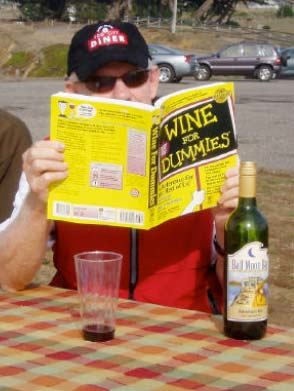PinotFile: 7.24 August 28, 2009
|
Pinot Days 2009: Pinot for Every PalateThe 5th Annual Pinot Days was held in San Francisco, June 24-28, 2009. It was a love fest for Pinot Geeks featuring 190 Pinot Noir producers from primarily California and Oregon, with a few representatives from New Zealand, France, Germany and Chile. With most producers pouring several wines, there were well over 500 Pinot Noirs to sample offering Pinot Noir for every palate. With over 4,000 people in attendance at Fort Mason, the commotion prevented serious wine evaluation, but the event is a wonderful opportunity to renew friendships, discover new wineries, and become better acquainted with the people and stories behind the wines. As Tim Atkin, MW, has said, “The character, ambition and talent of the person who made the wine is highly relevant to how the wine tastes. I want to know about these things, just as I want to know about vintage conditions, personal eccentricities, and a winemaker’s take on the world. All of these things made wine different; all of these things make wine special.”
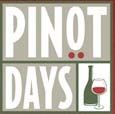 Pinot Days is more than the walk-around Grand Tasting that concludes the event on Sunday. On the days preceding the Grand Tasting, special winemaker dinners are held in San Francisco along with a number of “offline” events. Each year a Spotlight Tasting is held featuring a prominent winemaker. This year the honoree was Ed Kurtzman. On Saturday, there were four seminars featuring themed focus tastings of Pinot Noir, the highlight of which was the “Legends of California Pinot Noir” seminar. As the moderator for these sessions, I can report the wines were enthusiastically received by the attendees. The winemakers sat among the attendees, proudly chatting about the story behind their wines, and each winemaker gave a short presentation about their winery and wine to the group. Sixteen wines were poured at each seminar. There were Pinot Noirs for every taste, and when the attendees were asked their preferences, the room was always split, with each wine finding some fans among the group. Clearly, everyone does not like the same wine, and what some people abhor, others find perfectly suited to their taste. We are all our own arbiters of taste. In the pages to follow, I will present a summary of three of the Focus Tastings and the Spotlight Tasting featuring Ed Kurtzman. Look for podcasts with complete coverage of these special sessions and others at Pinot Days in the months to come from Grape Radio (www.graperadio.com).
Producer Spotlight Tasting: Ed KurtzmanEd Kurtzman is one of the most laid back winemakers you will ever come across, belying his accomplished winemaking skills. Ed’s interest in wine began as an undergraduate at the University of Massachusetts in the late 1980s while working at a large retail wine store. He later moved to California and sought employment as a wine wholesaler. Realizing his calling, he enrolled in the enology program at University California Fresno. To earn money, he was reportedly one of the best taxi drivers in San Francisco during the years of his wine studies. After graduation, he had stints at Bernardus, Chalone, Fort Ross and Testarossa before settling into his current winemaking positions with August West, Freeman, Roar and Sandler Wine Company. He is also a consulting winemaker at Crushpad. Ed really has a touch with Pinot Noir and his wines are a guarantee of quality in the bottle.
 August West is a partnership formed in 2002 between winegrower Gary Franscioni, businessperson Howard Graham, and winemaker Ed Kurtzman. The name, August West is from a Grateful Dead song, ‘Wharfrat,’ in which August West is down and out and drinks large amounts of “Burgundy.” Two vineyard-designate Pinot Noirs are produced from Rosella’s Vineyard in the Santa Lucia Highlands and Graham Vineyard in the Russian River Valley. The wines are sold through an allocation list at www.augustwestwine.com and through limited retail distribution. Production in 2007 was just under 1,400 cases. The wines are crafted in a new winery facility located at 81 Dorman Ave. in San Francisco. Tasting is by appointment (415-225-2891) The tasting offered vintages 2004, 2005, 2006 and 2007 August West Graham Family Vineyard and August West Rosella’s Vineyard Pinot Noirs. The age ability of the wines was impressive with the 2004 vintage being the standout in the flight. These are fruit-driven and opulent wines with alcohols in the high 14s, yet they are balanced, bright, juicy, and drink beautifully.
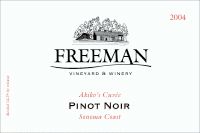 The winemaking is very similar for both the Freeman and August West wines. The 2005 and 2006 Freeman Keefer Ranch Pinot Noirs, the only single-vineyard Pinot Noir produced at Freeman, were offered for tasting. Both wines were solid, showing appealing aromas and flavors of red cherries with moderate alcohols, lively acidity and deft use of oak. The wines are most charming within the first five years after release but can last longer.
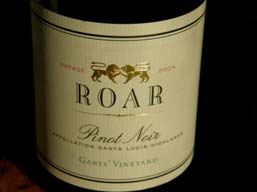 Roar is a partnership between Gary Pisoni, the manager of Pisoni Vineyard, and Gary and Rosella Franscioni, owners of the nearby Garys’ (with Gary Pisoni) and Rosella’s vineyards. The name, Roar, is derived from the sound of the ocean winds that characterize the Santa Lucia Highlands. The Roar Pinot Noir, Syrah and Chardonnay are produced from grapes from the three vineyards. Ed Kurtzman makes the wines in consultation with Adam Lee of Siduri at the winery’s new facilities in San Francisco. The Roar wines are sold primarily through a mailing list at www.roarwines.com. The Roar wines offered for tasting included the Santa Lucia Highlands, Rosella’s Vineyard, Garys’ Vineyard and Pisoni Vineyard all from the 2007 vintage. These wines carry the stamp of Gary Franscioni who is involved with the winemaking. They are big-boned, bold, fruit-driven, statement wines that appeal to those who like their Pinots rich and masculine.
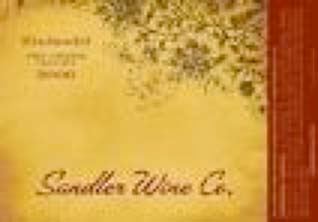 Sandler Wine Company is Ed Kurtzman’s personal label (Sandler is his middle name) that was founded in 2003. Ed crafts small lots (less than 150 cases) of Pinot Noir, Syrah and Zinfandel (and occasionally Cabernet Sauvignon). The wines are produced at the new winery shared by August West and Roar in San Francisco. The Sandler Wine Company wines are sold exclusively through a mailing list at www.sandlerwine.com. The 2004 and 2007 Sandler Santa Lucia Highlands Pinot Noirs were offered. These are fine, but not extraordinary wines, reflecting the dark fruits, modest tannins and earthiness typical of the Santa Lucia Highlands appellation. The 2004 vintage has held up beautifully. Very similar to Freeman in style, but reflective of Santa Lucia Highlands terroir.
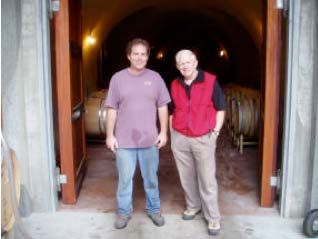 At the end of the tasting, Ed gave the attendees a Pinot Noir Quiz with a magnum of August West Pinot Noir as the prize. I was lucky to get the most correct answers and win a magnum. Here is the quiz with the answers on the next page. Good luck (I got 9 out of 10 correct). See if you can beat the Prince.
1. Name six clones or selections of Pinot Noir.
Pinot Noir Newcomers Focus TastingThese select newer Pinot Noir producers are worthy of your attention. These newcomers have only a few vintages under their belt and most produce less than 1,000 cases annually. The wines presented by these 15 producers were very impressive. Here are their profiles. Baxter Winery, Mendocino Ridge, CA
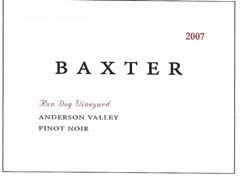 Phil Baxter studied winemaking at University California Fresno and started his career at Charles Krug Winery. Later he oversaw development of the Souverain Napa operation and was the head winemaker at Rutherford Hill Winery. He then moved to Domaine Michel. In 1989, Baxter started his own Phillipe-Lorraine label honoring his maternal grandparents. With his youngest son, Phil Baxter,Jr., he now focuses his energy on Phillipe-Lorraine and their new single vineyard label, Baxter Winery, which debuted in 2003. Phil, Jr., is a graduate of University California Davis. He developed his winemaking skills in Burgundy at Domaine de la Vougeraie and Domaine Raymond Launay. The Baxters have consolidated their winemaking at their family farm in Elk, CA, in the Mendocino Ridge AVA. Single-vineyard Pinot Noirs are produced from Toulouse Vineyard and Red Dog Vineyard, both in the Anderson Valley, and Oppenlander Vineyard in Comptche, just north of the Anderson Valley in Mendocino County. Other red varietals include Syrah, Cabernet Sauvignon and Carignane. The wines are largely sold through a mailing list at www.baxterwinery.com. Tasting is by appointment (707-963-0121). Featured wine: 2006 Baxter Winery Oppenlander Vineyard Comptche Mendocino County Pinot Noir (One of my favorite wines of this seminar tasting. Nicely balanced, bright acidity).
Black Kite Cellars, Anderson Valley, CA
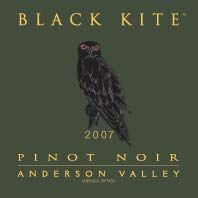 This is a family owned producer of Pinot Noir whose principals include Donald Green, Rebecca Green and Rebecca Green Birdsall. The name derives from the endangered Black Shouldered Kite, a hawk that is native to the Anderson Valley. The 12-acre Black Kite Vineyard was planted in 1999 in the cool “deep-end” of the Anderson Valley. The Pinot Noir lineup includes about 900 cases of a vineyard-designate (Kite’s Rest) and three block-designate wines (Redwood’s Edge, Stony Terrace and River Turn). The winemaker since 2005 is accomplished veteran Jeff Gaffner and the viticulturist is Paul Ardzrooni who is experienced in management of Anderson Valley Vineyards. The wines are sold through a mailing list at www.blackkitecellars.com with limited retail distribution. Featured wine: 2007 Black Kite Cellars Kite’s Rest Anderson Valley Pinot Noir (Darkly fruited wine of great mid-palate density with persistence on finish. Previously reviewed in the PinotFile).
Bjornstad Cellars, Sebastopol, CA
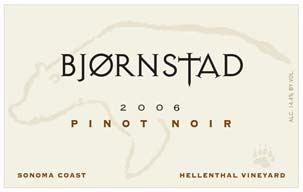 Winemaker Greg Bjornstad produces small quantities of handcrafted, vineyard-designated Pinot Noir and Chardonnay from the Sonoma Coast, Russian River Valley, Bennett Valley and Sonoma Mountain appellations. After graduate studies at University California Davis, Bjornstad joined Joseph Phelps Vineyards as their viticulturist and later held the same position at Newton. In 1996, he joined Flowers Vineyard & Winery as vineyard manager and assistant winemaker. Flowers was awarded the title, “Artisan Winery of the Year,” two years in a row by Wine & Spirits magazine while Bjornstad worked there. In 1999, he launched an international vineyard consulting business and has assisted winegrowers in Russia, South Africa and Australia and well-known clients such as DuMol, Hirsch, Kistler, Kosta Browne, Paul Hobbs, Pisoni and Scott Paul in the United States. He founded his own label, Bjornstad Cellars. Current Pinot Noir releases are from the Hellenthal Vineyard in the true Sonoma Coast and a Sonoma County blend. Bjornstad has worked with the Hellenthal Vineyard since 1997. Bjornstad is also the winemaker for newcomer Pfendler Vineyards located in Petaluma. Bjorstad Cellars wines are sold through a mailing list at www.bjornstadcellars.com with limited retail distribution. Featured wine: 2006 Bjornstad Cellars Hellenthal Vineyard Sonoma Coast Pinot Noir (Plenty of oak influence start to finish, earthy, dense, tannic)
C. Donatiello Winery, Healdsburg, CA
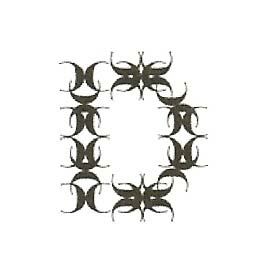 Christopher Donatiello, a former New York based wine and spirits distributor, teamed with investment banker Bill Hambrecht to transform the site of the former Belvedere Winery on Westside Road. The spectacular 14.5-acre estate has an organically farmed vineyard (Maddie’s Vineyard), a contemporary wood and glass hospitality center and tasting room, and an organic garden that introduces visitors to flora that offer the aromas found in the Burgundian varieties. The winery was launched in 2008. The focus of the winery is on small lot Pinot Noir and Chardonnay from the organic estate vineyard and carefully chosen vineyards in the Russian River Valley. Webster Marquez (formerly at Williams Selyem and currently one of the trio of winemakers at Anthill Farms) is the winemaker. For 2007, three vineyard-designated Pinot Noirs are offered: Maddie’s Vineyard, Floodgate Vineyard and Hervey Vineyard. The wines are sold through a mailing list, at the tasting room and online at www.cdonatiello.com. Very high quality, classy wines here. Featured wine: 2007 C. Donatiello Winery Maddie’s Vineyard Russian River Valley Pinot Noir (Previously reviewed in the PinotFile).
Coterie Cellars, South San Francisco Bay, CA
 Coterie Cellars is a boutique producer of small lots of handcrafted wines located near Willow Glen, just south of the city of San Jose. The winery is a member of the currently popular Urban Winery Movement. The formative years of the winery occurred as part of a coterie of winery workers for Eno Wines in the East San Francisco Bay area and Harrington Wines located in urban San Francisco. The founders are Shala and Kyle Loudon. Kyle’s winemaking training includes non-matriculated studies in viticulture and enology at University California Davis and Shala brings a client focus from years of work at Williams Selyem. Grapes are sourced from prominent vineyards in the Russian River Valley, Santa Lucia Highlands and Fiddletown. For 2007, vineyard-designated Pinot Noirs include wines from Saralee’s Vineyard in the Russian River Valley and Fairview Road Ranch in the Santa Lucia Highlands. The wines are sold through an allocated mailing list and online at www.coteriecellars.com. Featured wine: 2007 Coterie Cellars Saralee’s Vineyard Russian River Valley Pinot Noir (A rich wine with a huge nose that was very appealing)
Couloir Wines, Napa Valley, CA
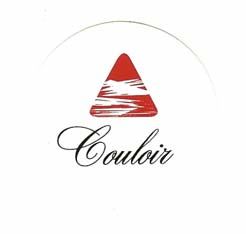 Jon Grant founded Grant Family Wines in 2008 while working as an assistant winemaker at Turley Winery. He has been mentored at Plumpjack Winery, Corison Winery and Robert Mondavi Winery. There are two labels under the Grant Family Wines umbrella: Couloir Wines are single-vineyard Pinot Noirs and Straight Line Wines are non-Pinot Noir varietals. The name, Couloir, refers to a steep mountainside gorge and reflects Grant’s love for ski mountaineering. Two vineyard-designated Pinot Noirs are offered from the Anderson Valley: Roma’s Vineyard and Monument Tree Vineyard. The wines are sold through a mailing list at www.couloirwines.com. Featured wine: 2007 Couloir Wines Roma’s Vineyard Anderson Valley Pinot Noir (Previously reviewed and recommended in the PinotFile).
Expression Wine, Napa Valley, CA
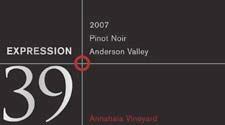 This winery produces multiple Pinot Noirs from different latitudes representing different “Expressions” of Pinot Noir. Winegrowing regions represented include Santa Rita Hills, Sonoma Coast, Anderson Valley and the Eola-Amity Hills of Oregon. The goal of winemaker Richard Sowalsky is to feature the vineyards and the terroir of each region. Sowalsky is a graduate of University California Davis with experience at Handley Cellars, Havens Wine Cellars, Robert Mondavi Winery, William Hill Winery and Big Horn Cellars. The wines are crafted at the Silverado Trail Wine Studio. Expression wines are sold through a mailing list, on the website at www.expressionwine.com, and through limited retail distribution. Featured wine: 2007 Expression 39 Annahala Vineyard Anderson Valley Pinot Noir. (Previously reviewed in the PinotFile)
Kendric Vineyards, San Anselmo, CA
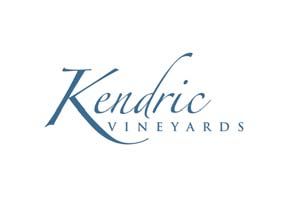 Owner, winegrower and winemaker Stewart Johnson farms the 8.5-acre Kendric Johnson Vineyard planted in 2002 on leased land in Marin County. The current parcel is a fraction of Kendric’s lease of 80 total acres on a 1,500-acre cattle ranch. Planted Pinot Noir clones are 37, 115, 667, 777, 828, Pommard and Martini. Johnson started his label in 2001 and crafts about 600 cases of Pinot Noir from the Kendric Johnson Vineyard and Syrah from Shenandoah Valley. Johnson grew up in Amador County near the Zinfandel-making Sobon family, got a doctorate in political science from Yale, and graduated with a law degree from Hastings. While interning at the Environmental Protection Agency, he was drawn to the outdoors instead of an office practicing law. With his wife, who is a Marin County native, he discovered the pastoral beauty of Marin County and decided to grow grapes there. The wines are sold through a mailing list and on the website at www.kendricvineyards.com. Retail distribution is limited. Featured wine: 2006 Kendric Vineyards Marin County Pinot Noir (One of the best wines featured and the wine with the most lively acidity and refreshing finish. Previously reviewed and recommended in the PinotFile).
Kokomo Winery, Healdsburg, CA
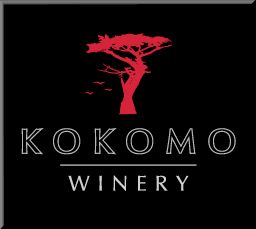 Located at Timber Crest Farms in Healdsburg, the Kokomo Winery was started in 2004 with the production of a single-vineyard Cabernet Sauvignon. A new winery was opened in January 2008. Owner and winemaker, Erik Miller, is a native of Kokomo, Indiana. He studied at University California Davis and worked at Belvedere Winery and Amphora Winery. Erik’s assistant is his best friend and college roommate, Josh Bartels. The focus is on Dry Creek Valley and Russian River Valley fruit. Two vineyard-designated Pinot Noirs are produced from Peters Vineyard (Sonoma Coast) and Windsor Oaks Vineyard (Russian River Valley). The wines are sold online at www.kokomowines.com. Featured wine: 2006 Kokomo Wines Peters Vineyard Sonoma Coast Pinot Noir (One of the better Pinot Noirs in this seminar).
Périple Wines, Garden City, ID
 There are now almost 40 wineries in Idaho and Idaho ranks 22nd in the country for wine production. Périple is a partnership between winemaker Angie Riff, a former apprentice of Helen Turley’s, and Lloyd Mahaffey, a former Apple Computer executive. The word Périple (“Pair ee play”) is the French word for a journey. Périple is “a wine that reflects the contemplative walk in a labyrinth where perspective gains inner knowledge in a quest for the highest truth.” The inaugural Pinot Noir release is a 2007 Inman Olivet Russian River Valley Pinot Noir. After harvest, the grapes traveled north to Handley Cellars they were processed and crushed. The juice was then transported to Eagle, Idaho where it was aged and finished. The winery plans to add more wines, sourcing grapes from the Northwest, including the Willamette Valley of Oregon, the Columbia Valley of Washington, and the new Snake River Valley of Idaho. The emphasis is on small (250 cases or less) lots of wine emphasizing quality. The wines are sold through a mailing list at www.periplewines.com. Featured wine: 2007 Périple Wines OGV Russian River Valley Pinot Noir (More elegant and understated than Turley’s Marcassin Pinot Noirs . A very charming wine and recommended).
Richard Berridge Wines Richard Berridge, a Napa Valley landscape architect by trade, was one of the original founders of Duckhorn Wine in 1978, and has been involved in the wine industry ever since. In 2000, Berridge started his own Pinot Noir label out of Central Otago, New Zealand, called Drystone. Serendipity brought him together with winemakers Ginny Lambrix and Greg La Follette and several memorable barrels of 2007 California Pinot Noir. The two inaugural Pinot Noir releases are from Manchester Ridge Vineyard in the Mendocino Ridge AVA and Van der Kamp Vineyard on Sonoma Mountain. Production is miniscule, about 45 cases of each. The Van der Kamp is unique in that contain 25% Pinot Meunier. The wines are to be released in the fall of 2009 and will be sold to a mailing list at www.berridgewines.com. Featured wine: 2007 Richard Berridge Manchester Ridge Pinot Noir (An excellent and luscious wine that hides its high alcohol well).
Sand Hill Wines at Durell Vineyard, Sonoma, CA
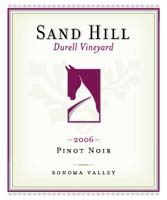 The renowned Durell Vineyard was planted by owner Ed Durell and vineyard manager Steve Hill in 1979. The Sand Hill Wines label was launched with the 2002 vintage. The current owner of the vineyard and winery is Eleanor Phipps Price who, along with her former spouse, Bill Price, bought the Sand Hill Ranch and Durell Vineyard from Ed Durell in 1998. The Sand Hill Wines label is a collaboration between Price, vineyard manager Steve Hill, and former Chateau St. Jean winemaker Don Van Staaveren. The Durell Vineyard extends from the southern end of the Sonoma Valley into the western end of the cool Carneros region. Kistler has sourced fruit from this vineyard for years. Sand Hill Wines produces a single estate Pinot Noir and Chardonnay. The wines are sold through a release list on the website at www.sandhilldurell.com. Featured wine: 2006 Sand Hill Wines Durell Vineyard Sonoma Valley Pinot Noir (Previously reviewed in the PinotFile).
Spell Winery, Novato, CA
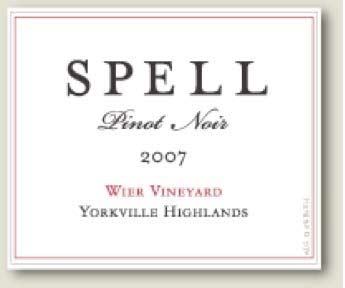 The winemaker for Spell, Shane Finley, is also an assistant winemaker at Kosta Browne Winery in Sebastopol, CA. Finley grew up in Minnesota and after college became disenchanted with an office job. He ventured to California where he landed a position as a cellar rat at Copain Wine Cellars in Santa Rosa. Later he would make wine in Australia and France. Shane’s first two Pinot Noir releases came from the 2007 vintage and were sourced from Barton Vineyard in the Russian River Valley and Weir Vineyard in the Yorkville Highlands. The wines are sold through a mailing list at www.spellwinery.com. Featured wine: 2007 Spell Winery Weir Vineyard Yorkville Highlands Pinot Noir. (Rich ripe with notable tannins and an underlying earthiness. Needs more time. Previously reviewed in the PinotFile).
Suacci Carciere Wines, Sebastopol, CA
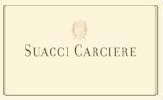 This new boutique winery was founded by the Suacci and Carciere families who have been close friends for twenty-five years. The families live in Sebastopol and both had Italian grandfathers who made wine. The first wines from the 6.5-acre Suacci Vineyard in Blucher Valley of the Russian River Valley AVA were released from the 2006 vintage, the vineyard’s fifth harvest. The winemaker is Ryan Zepaltas. A Chardonnay is produced from Heintz Vineyard. The wines are sold through a mailing list at www.suaccicarciere.com. Featured wine: 2007 Suacci Carciere Wines Suacci Vineyard Russian River Valley Pinot Noir (One of my favorites of this tasting seminar).
Thomas George Estates, Healdsburg, CA
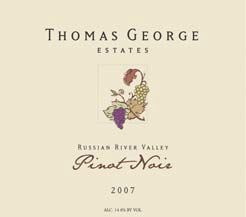 The Baker Family from Toronto, Canada acquired the Davis Bynum Winery and estate vineyards. Jeremy Baker has directed the renovation of the aged winery, tasting room and vineyards. The winery has been expanded and modernized with the eventual goal of producing 16,000 cases of wine per year. The 20-acre estate Lindley’s Knoll Vineyard (renamed Baker Ridge Vineyard) is undergoing revitalization under the direction of noted viticulturist Ulises Valdez. The Bakers bought the 26-acre Starr Ridge Vineyard and the 14-acre Cresta Ridge Vineyard, both in the Russian River Valley. Contracts with growers such as Windsor Oaks Vineyard will supply further grapes. Both veteran winemakers Gary Farrell and Guy Davis have consulted on the project. The new winemaker is Chris Rossi, a University California Davis graduate who was previously the winemaker at Christopher Creek. The wines are sold through the tasting room and online at www.thomasgeorgeestates.com. The winery officially opened in early 2009. The wines will improve over the next few years as the new vineyard sources join the mix. Featured wine: 2007 Thomas George Estates Russian River Valley Pinot Noir.
Celebrated Vineyards Focus Tasting
Visionary David Hirsch planted one of the first vineyards in the true Sonoma Coast in Cazadero in 1980 (Mike Bohan preceded him in 1973). In 1978, Hirsch bought 1,100 acres on a remote ridge 1,500 feet above and three miles to the southwest of the Pacific Ocean. Beginning in 1980, David and Marie Hirsch established a vineyard which would eventually encompass 72 acres on the ridge tops above the fog line. Planted to Pinot Noir and Chardonnay, Hirsch Vineyard became world-renowned when Burt Williams (Williams Selyem), Ted Lemon (Littorai), and Steve Kistler (Kistler Vineyards) showed up one day in the early 1990s, chose their blocks, and began to make startling good and age worthy vineyard-designate Pinot Noirs from the vineyard. The name, Hirsch Vineyard, quickly became synonymous with the true Sonoma Coast. The area is a coastal rainforest with a desert-like climate in the summer. The vineyard is scattered over several ridge tops with varying exposure, altitude and soil type, and there are a variety of rootstocks and clones planted. The result is considerable heterogeneity to the fruit, so Hirsch Vineyard Pinot Noirs from different producers are difficult to compare. In 2002, the Hirschs built a 15,000 case winery on the estate in an old lambing barn and launched their Hirsch Estate label. The vineyard now consists of approximately 68 acres of Pinot Noir and 4 acres of Chardonnay. Pinot Noir clones include 114, 777, Pommard, Swan and Mt. Eden divided into old vineyards (planted between 1980 and 1998) and new vineyards (planted in 2002 and 2003). Photos below are of David Hirsch (L), winemaker Bob Cabral of Williams Selyem (R) and winemaker Kevin Kelley of LIOCO. Featured wines:
2006 Hirsch Vineyard Estate Sonoma Coast Pinot Noir 2006 LIOCO Hirsch Vineyard Sonoma Coast Pinot Noir 2006 Williams Selyem Winery Hirsch Vineyard Sonoma Coast Pinot Noir
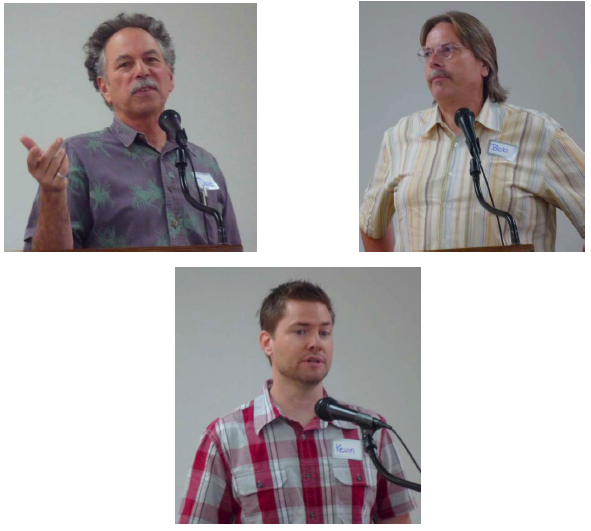
Featured wines:
2006 Clos Pepe Estate Sta. Rita Hills Pinot Noir 2007 Siduri Wines Clos Pepe Vineyard Sta. Rita Hills Pinot Noir 2006 Roessler Cellars Clos Pepe Vineyard Sta. Rita Hills Pinot Noir
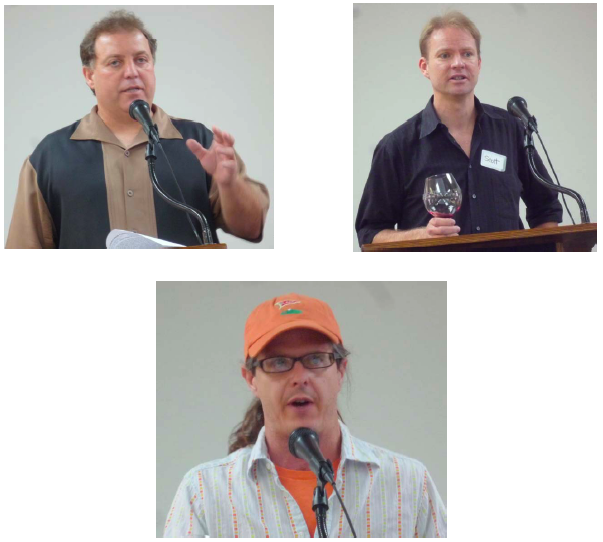
Featured wines:
2006 Freeman Keefer Ranch Russian River Valley Pinot Noir 2007 Keefer Keefer Ranch Russian River Valley Pinot Noir 2007 Siduri Keefer Ranch Russian River Valley Pinot Noir
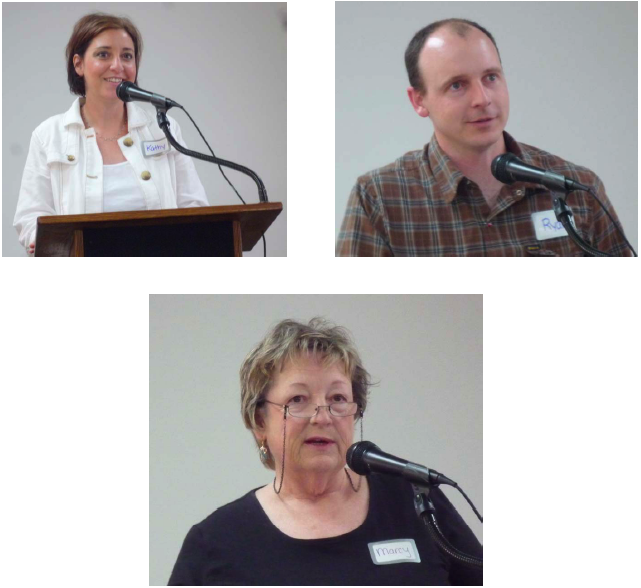
The Pisoni Vineyard now consists of 45 acres of small blocks, each with a distinct soil type and microclimate. Perched at 1,300 feet on the southern end of the Santa Lucia Highlands AVA, the mountain estate overlooks the fertile Salinas Valley. Fog curls in from nearby Monterey Bay, contributing to the cool mornings and nights. Winemaker son, Jeff Pisoni, and grape grower son, Mark Pisoni, created the Pisoni label, releasing the first estate Pinot Noir in 1998. A second label, Lucia, debuted in 2000. Pisoni fruit quickly became highly prized in California and Pisoni Vineyard essentially put the Santa Lucia Highlands region on the map, becoming one of California’s true “Grand Cru” vineyards. Mark Pisoni presides over a 15-person crew that has tended the vines by hand for over 10 years. Many top producers craft a Pisoni Vineyard Pinot Noir including Arcadian, Capiaux, Morgan, Patz & Hall, Peter Michael, Siduri, Tantara and Testarossa. Gary Pisoni manages the nearby Garys’ Vineyard with Gary Franscioni. Photos below are of Gary Pisoni of Pisoni Estate (L), winemaker Joe Davis of Arcadian with Gary Pisoni (R), Jeff Fink of Tantara (L), owner Rob Jensen of Testarossa Vineyards (R), and winemaker Jeff Pisoni of Pisoni Estate. Featured wines:
2006 Pisoni Pisoni Estate Santa Lucia Highlands Pinot Noir 2007 Tantara Pisoni Vineyard Santa Lucia Highlands Pinot Noir 2007 Testarossa Vineyards Pisoni Vineyard Santa Lucia Highlands Pinot Noir Listen to this focus tasting: http://www.graperadio.com/archives/2009/11/23/2009-pinot-days-seminar-1-part-1/ and http://www.graperadio.com/archives/2009/11/23/2009-pinot-days-seminar-1-part-1/
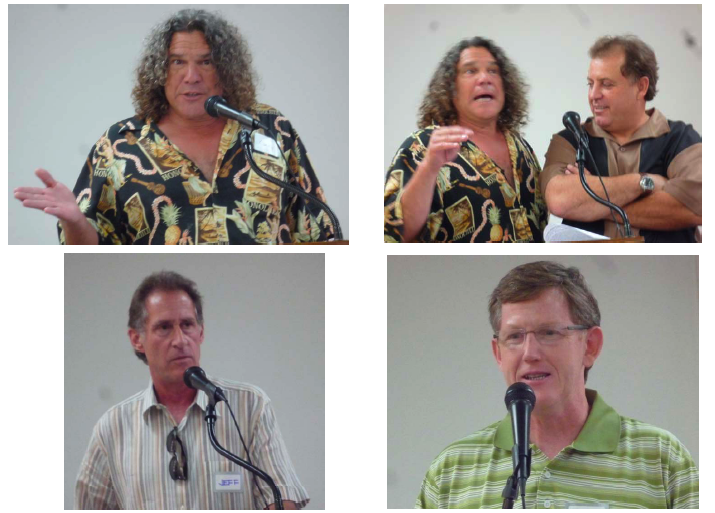
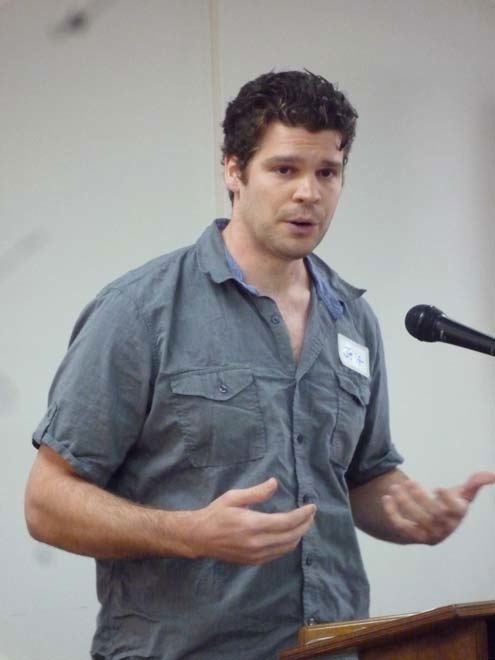
Legends of California Pinot NoirMerry Edwards Wines, Sebastopol, CA
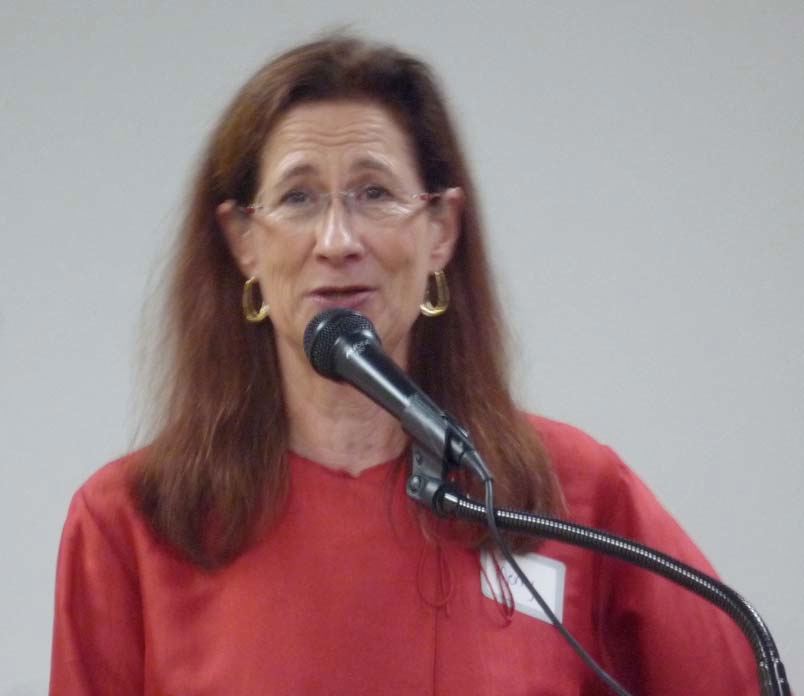 Merry (Meredith) Edwards has deservedly become known as the “Queen of Pinot.” Throughout her career she has made some benchmark California Chardonnay, Merlot, Sauvignon Blanc, and sparkling wine. Her true passion, however, is Pinot Noir, her heart is in the Russian River Valley, and her legacy will say that she was the first woman to made credible Pinot Noir in California. As a youngster, Merry Edwards was an avid cook and food scientist as well as home winemaker. After obtaining a master’s degree in food science and enology at University California Davis, she was hired to succeed Peter Graff at Mount Eden in the Santa Cruz Mountains in 1974. She crafted some remarkable wines during her short tenure there (1974-1976). Her pioneering work in clonal selection while at Mount Eden led to the now widely planted UCD 37 certified clone of Pinot Noir. Her work at Mount Eden was remarkable for the time, because there were very few winemaking jobs offered to women and only a handful of notable Pinot Noirs were being produced in Northern California. As a point of historical reference, Joe Swan released his first Pinot Noir in 1973, Davis Bynum bottled his Rochioli Pinot Noir in 1972, the Pellegrini family planted the Olivet Lane Vineyard in the Russian River Valley in 1972, and Tom Dehlinger, Forrest Tanzer at Iron Horse, and Marimar Torres were starting their own Pinot Noir programs in the Russian River Valley in the mid 1970s. Merry Edwards left Mount Eden in 1977 and went on to national prominence at Matanzas Creek. While there, she continued to produce Pinot Noir from the Quail Hill Vineyard in the Russian River Valley. She had her own label, Merry Vintners, which failed financially, and had a stint as winemaker at Domaine Laurier. Along the way she consulted for numerous wineries including Liparita, Fritz, Lambert Bridge, and Pellegrini Family Vineyards. The most exciting chapter of Merry’s professional career is her current passion. In 1996, she bought a 24-acre fruit orchard in the southern part of the Russian River Valley and formed a partnership with her husband, Ken Coopersmith and others, under the Meredith Vineyard Estate name. This allowed her to produce Merry Edwards wines from select Pinot Noir grapes in the Russian River Valley and Sonoma Coast, including, for the first time, her own vineyards: Meredith Estate, Coopersmith, Georganne and Cresta d’Oro. After many years as a guest at other wineries, the Merry Edwards Winery, located at the Coopersmith Vineyard acquired in 1999, opened in time for the 2007 harvest (see photo below).
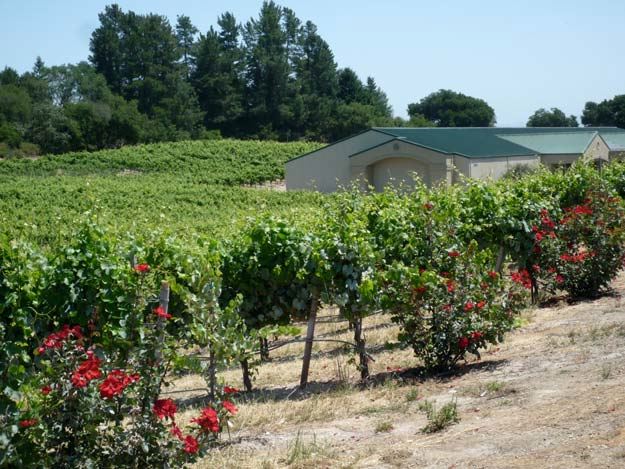 Merry releases eight Pinot Noirs and one Sauvignon Blanc under the Merry Edwards Wines moniker. The Russian River Valley and Sonoma Coast appellation bottlings and the Olivet Lane Vineyard Pinot Noirs are spring releases, and the vineyard-designated Pinot Noirs from Klopp Ranch, Tobias Glen, Flax, Meredith Estate, and Coopersmith vineyards and Sauvignon Blanc are released in the fall. The wines are sold online, to an eager mailing list at www.merryedwards.com, and to a lengthy list of restaurants nationally. Tasting at the new winery at 2959 Gravenstein Highway North, Sebastopol, is available by appointment (707-823-7466). Featured wines:
1997 Merry Edwards Olivet Lane Vineyard Russian River Valley Pinot Noir Magnum (1st vintage under her own label. An outstanding wine which has aged gracefully.) 2000 Merry Edwards Meredith Estate Sonoma Coast Pinot Noir Magnum (Inaugural vintage from founding estate vineyard) 2003 Merry Edwards Klopp Ranch Russian River Valley Pinot Noir (Merry’s 30th vintage).
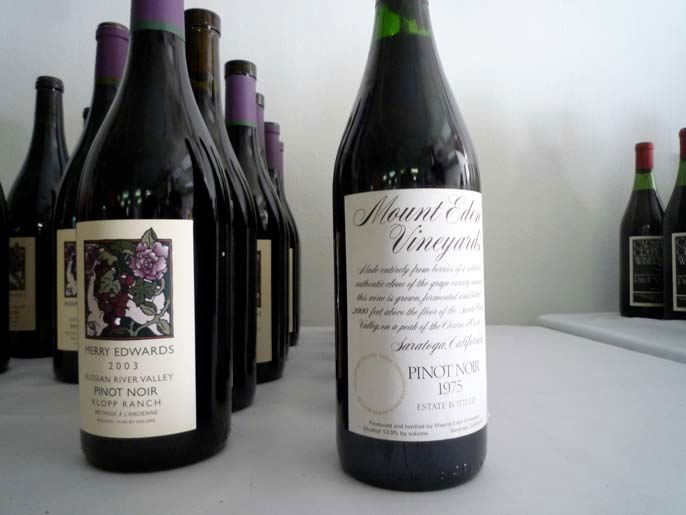
Alma Rosa Winery & Vineyards, Buellton, CA
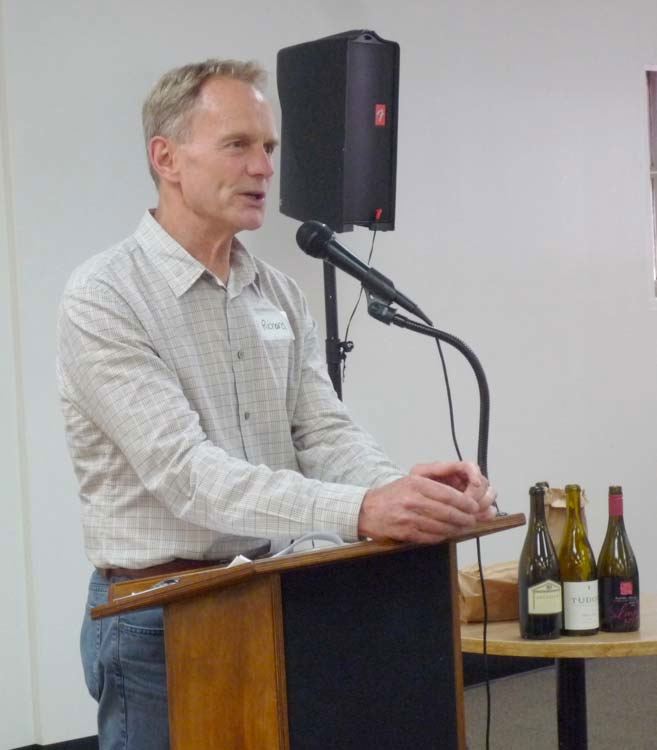 Richard Sanford is a revered icon in the annals of California Pinot Noir, having been largely responsible for putting the Santa Rita Hills on the wine map. Along with partner Michael Benedict, he planted the 100-acre Sanford and Benedict Vineyard back in 1970 on Santa Rosa Road. The vineyard was nine miles west of Buellton at the western end of the Santa Ynez Valley. As a student of geography, Sanford saw the potential of the Santa Rita Hills region for Pinot Noir and Chardonnay. Victor Geraci notes in his book, Salud! The Rise of Santa Barbara’s Wine Industry, “He traveled through the Burgundian region of France and began to dream of a life in agriculture. He had no agricultural experience and thus went through the agonizing decision of whether to go to University California Davis for a master’s degree in enology or to plant a vineyard and learn through trial and error....Being a little crazy, Sanford decided in that year (1970) to go directly into business. In 1980, Sanford ended his partnership with Michael Benedict, who subsequently sold his share to a British businessperson, Robert Atkin. Atkin invested in Sanford’s winery, which was founded in 1981, and hired Sanford to manage the Sanford & Benedict Vineyard. Sanford was a strong advocate of organic farming from the beginning of his career. Sanford Winery went on to become a respected and successful large winery with a small, quaint tasting room on Santa Rosa Road made famous in the movie, Sideways. By 1993, Sanford Winery was producing 30,000 cases of wine per year with Bruno d’Alfonso as the winemaker. In 1997, Sanford planted a second vineyard, the 130-acre Rancho La Rinconada adjacent Sanford & Benedict Vineyard, and in 2001 completed his dream winery on that property. Beginning in 2002, a number of events played out that eventually led Sanford to loose his namesake winery. In 2005, Richard and his wife, Thekla, left to begin a new venture, Alma Rosa Winery and Vineyards. Alma means “soul” in Spanish, reflecting the Sanfords’ view that their wines reflect the soul of the Rancho Santa Rosa, the original Mexican land grant on which their vineyards are planted. When Sanford left the Sanford Winery the Sanford & Benedict Vineyard and the La Rinconada Vineyard and winery were also relinquished in exchange for the El Jabali Ranch (the site of the tasting room and the Sanford’s personal home) and La Encantada Vineyard. The Sanfords now farm organically over 100 acres of estate vineyards. The Alma Rosa wines are made since 2005 at Orcutt Road Cellars in the Edna Valley by winemaker Christian Roguenant following Richard Sanford’s protocol. There are several Pinot Noirs produced along with Chardonnay, Pinot Blanc, Pinot Gris and Pinot Noir Vin Gris (Rosé). Richard Sanford has been a tireless supporter of wine events over the years, patiently answering questions with polite aplomb and enthusiasm. Even today, Richard and Thekla eagerly participate in many Pinot Noir events, not content to rest on their laurels. The Alma Rosa tasting room is open daily from 11:00 AM to 4:30 PM at 7250 Santa Rosa Road in Buellton. Tasting room manager Chris Burroughs, who was featured in Sideways, is still at the helm. The wines are sold online at www.almarosawinery.com. Featured wines:
2001 Sanford Pinot Noir Sanford & Benedict and La Rinconada Pinot Noir (Charming old bouquet, rustic flavors of brown spiced cherries with bright acidity) 2007 Alma Rosa Mt. Eden Clone El Jabali Vineyard Sta. Rita Hills Pinot Noir (Previously reviewed in the PinotFile). 2007 Alma Rosa La Encantada Vineyard Sta. Rita Hills Pinot Noir (Previously reviewed in the PinotFile).
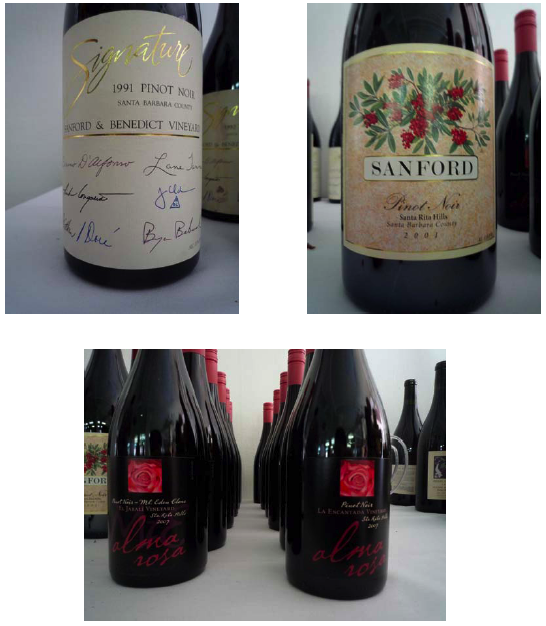
Mount Eden Vineyards, Santa Cruz Mountains, CA
 Mount Eden is a viticultural island perched at 2,000 feet uniquely planted to Pinot Noir, Chardonnay and Cabernet Sauvignon. Martin Ray started his eponymous and innovative winery at Mount Eden in the early 1950s. Ray estate bottled his wines and Mount Eden’s lineage of estate bottled Chardonnay and Pinot Noir is the longest in California. The modern era of winemaking at Mount Eden Vineyards passed through several hands beginning with the first vintage of Pinot Noir in 1972, including Dick Graff and his brother Peter, Merry Edwards, Bill Anderson and Fred Peterson. For the past twenty-eight vintages, Jeffrey Patterson has made the wines. Patterson is a selftaught winemaker who took a few basic courses at University California Davis.
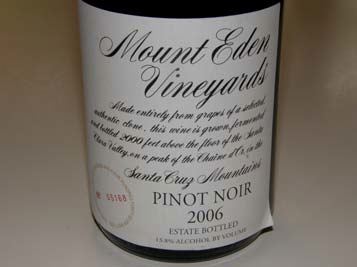 Patterson is widely admired for his ability to go it alone and achieve success. Working at an isolated vineyard and winery (Patterson and his family live at Mount Eden in the original hilltop house built by Martin Ray pictured below), he has own clearly defined vision, yet he has not been closed to what others are doing. His story is not well publicized and publicly he focuses more on Martin Ray and his legacy than his own accomplishments. One cannot help but be impressed by his panache in crafting highly unique wines which not only clearly reflect Santa Cruz Mountains terroir, but offer age ability that goes beyond what wine enthusiasts have come to expect from California Chardonnay and Pinot Noir. The ideal drinking window for Mount Eden Estate Pinot Noir is 7 to 10 years. Patterson began a stepwise replanting of the vineyard at Mount Eden in 1984, but kept one acre of the original Pinot Noir vines (UCD 37) as a “mother vineyard.” The remaining six acres of Pinot Noir are planted to Winery Lake, Mount Eden, Swan and Calera selections, and Dijon clones 115, 667, 777 and 828. The Mount Eden Estate Pinot Noir is a mosaic of all of these clones. Today, Mount Eden totals 40 acres of vineyards composed of 20 acres of Chardonnay, 7 acres of Pinot Noir and 13 acres of Cabernet Sauvignon with small amounts of Merlot and Cabernet Franc.
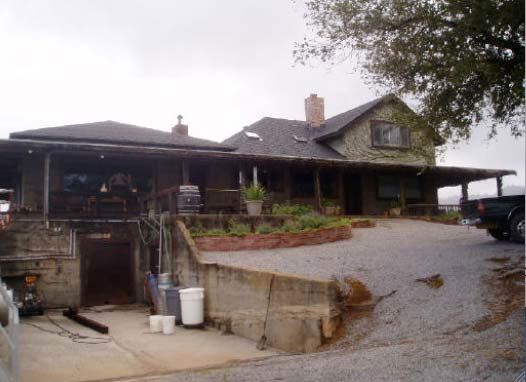
 The cool location of the vineyard, old clones and winemaking combine to produce an Old World style of Pinot Noir that is more austere than opulent. The wine departs from the typical California style by its higher tannins and acidity (the same holds true for the Mount Eden Estate Chardonnay and Cabernet Sauvignon). Many tasters have difficulty picking out a Mount Eden Estate Pinot Noir from a flight of French Burgundies. Mount Eden Estate wines are sold through a mailing list with limited retail distribution. Tasting is available in San Francisco at the Press Club. Tours (without tasting) of the historic Mount Eden property are available each weekday by reservation (www.mounteden.com). Library wines are available for sale on the website. Featured wines: 1996 Mount Eden Vineyards Estate Santa Cruz Mountains Pinot Noir (A vintage that started off just “ok” and blossomed.) 1998 Mount Eden Vineyards Estate Santa Cruz Mountains Pinot Noir (Challenging year with rain and cold throughout. This is a beautifully aged wine that has layers of flavor, impeccable balance and charm to spare. Impressive for a vintage with lousy weather.) 2000 Mount Eden Vineyards Estate Santa Cruz Mountains Pinot Noir (A lighter vintage showing the feminine side of Pinot Noir marked by harmony and grace. Incredible wine.) 2005 Mount Eden Vineyards Estate Santa Cruz Mountains Pinot Noir (Miniscule harvest from a great year. Still young and austere. Give this one another 10 years. Drink the 2006 vintage in the meantime.)
Mahoney Vineyards, Carneros, CA
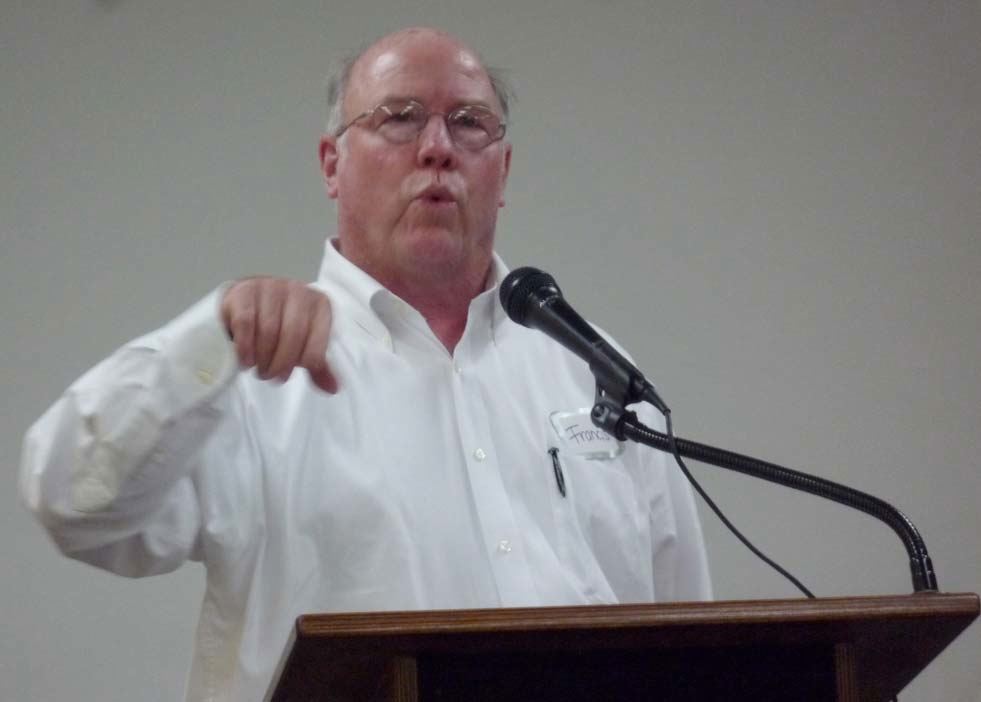 Francis Mahoney can claim 35 years of experience growing and producing wines in the Carneros region that spans the cool southern reaches of the Napa and Sonoma Valleys. He established Carneros Creek Winery in 1972 with his wife Kathleen and partner Balfour Gibson. With the goal of making Burgundian-styled wines, the trio built a winery in 1973, the first new winemaking facility in Carneros since the repeal of Prohibition. Mahoney was unique among Pinot Noir pioneers of the 1970s in that he realized that, besides climate and soil, clones were the third most important factor in creating great Pinot Noir. From 1975 to 1985, Mahoney and Curtis Alley, a professor at University California Davis and viticulture specialist, conducted experiments on a small 1.5-acre plot planted near the Carneros Creek Winery. 20 clones and selections from around the world were planted as part of the Carneros Creek Winery Clonal Trial, and the clones were evaluated in both the vineyard and in finished wines. The intent was to compare clones from University California Davis (so-called “clean-stock”) with clones not sourced from the clean-stock program. Valuable data was collected on clonal performance and many other vineyards were planted with budwood from this trial. No single clone was considered best. Mahoney said, “We liked different clones like we like different children. They had their own personalities and a little bit of this with a little bit of that makes a more interesting wine. We concluded that we would not just plant one clone in a vineyard.” The five best industry clones (A, E, M, P and V) were donated to the Foundation Plant Material Service (FPMS) for the public collection in 2002. ‘A’ came from Paul Masson/ Martin Ray sources by way of Joe Swan, ‘E’ came from the Gustav Niebaum/John Daniel/Inglenook Estate originally, ‘M’ was a Pinot Noir selection collected by Louis Martini and Harold Olmo, ‘P’ came from a vineyard near Chambertin by way of the Chalone Vineyard, and ‘V’ was Martini selection 583. Phase 2 of the Carneros Creek Winery Clonal Trial was planted in 1989 in Las Lomas, 3,000 feet from the original clonal study. Phase 3 is ongoing and includes some of the original clones and the new FPMS selections created from Carneros Creek clones. Mahoney was instrumental in founding the Carneros Quality Alliance (now Carneros Wine Alliance), an organization of winegrowers and wineries in Carneros. In the 1980s and 1990s, Mahoney planted the Mahoney Ranch Vineyard around his home, and Las Brisas Vineyard on Ramal Road. In 1998, he sold his majority share in Carneros Creek Winery to Bill Hambrecht, an investment banker closely allied with California wine. The winery subsequently passed through several hands to its present owner, Briarcliff Wine Group, LLC. Today, Mahoney Vineyards and Briarcliff share the Carneros Creek Winery. In 2002, Mahoney brought on Ken Foster as winemaker for Mahoney Vineyards. Foster had been the winemaker and production manager for David Bruce Winery in the Santa Cruz Mountains and had been making wine there for fifteen years. Mahoney now owns 162 acres of vineyards in Carneros, 149 acres of which are planted to Pinot Noir. Pinot Noir plantings include Swan selection, UCD 107 and Carneros Creek selections. Mahoney supplies Carneros Creek Winery and Mahoney Vineyards as well as selling fruit to others. Mahoney Vineyards currently releases four Pinot Noirs: a Carneros appellation blend and vineyard designates from Las Brisas Vineyard, Mahoney Ranch Vineyard, and Haire Ranch Vineyard. The Mahoney Vineyard wines are available for tasting at the Oxbow Tasting Room at 708 1st St. in Napa and on the website at www.mahoneyvineyards.com. Mahoney has always been true to his vision for Pinot Noir, crafting wines of balance, elegance and true varietal character while clearly demonstrating the influence of their Carneros heritage. Featured Wines:
1986 Carneros Creek Los Carneros Blue Label Pinot Noir (The first bottling of fruit sourced from both Mahoney’s clonal plot and the new Mahoney Ranch Vineyard. Of interest to lovers of old, austere Pinot Noir.) 1996 Carneros Creek Estate Grown Pinot Noir (First wine to bear the term “Estate Grown.” (Released in the 25th year of operation in special etched bottles. Well-rounded red fruits with lively acidity, secondary flavors of brown spice, mushroom, and sherry.) 2006 Mahoney Vineyards Mahoney Ranch Carneros Pinot Noir (20th year of production for this vineyard. Not released. Outstanding wine with beautiful composure. Hi-tone red Pinot fruits, gossamer tannins, silky mouthfeel, and a lengthy, refreshing finish. Recommended.)
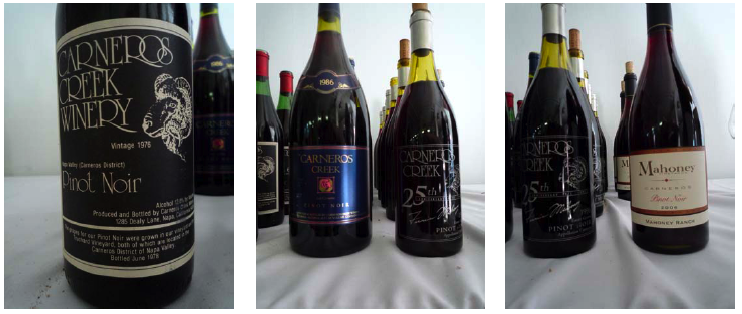
Postscript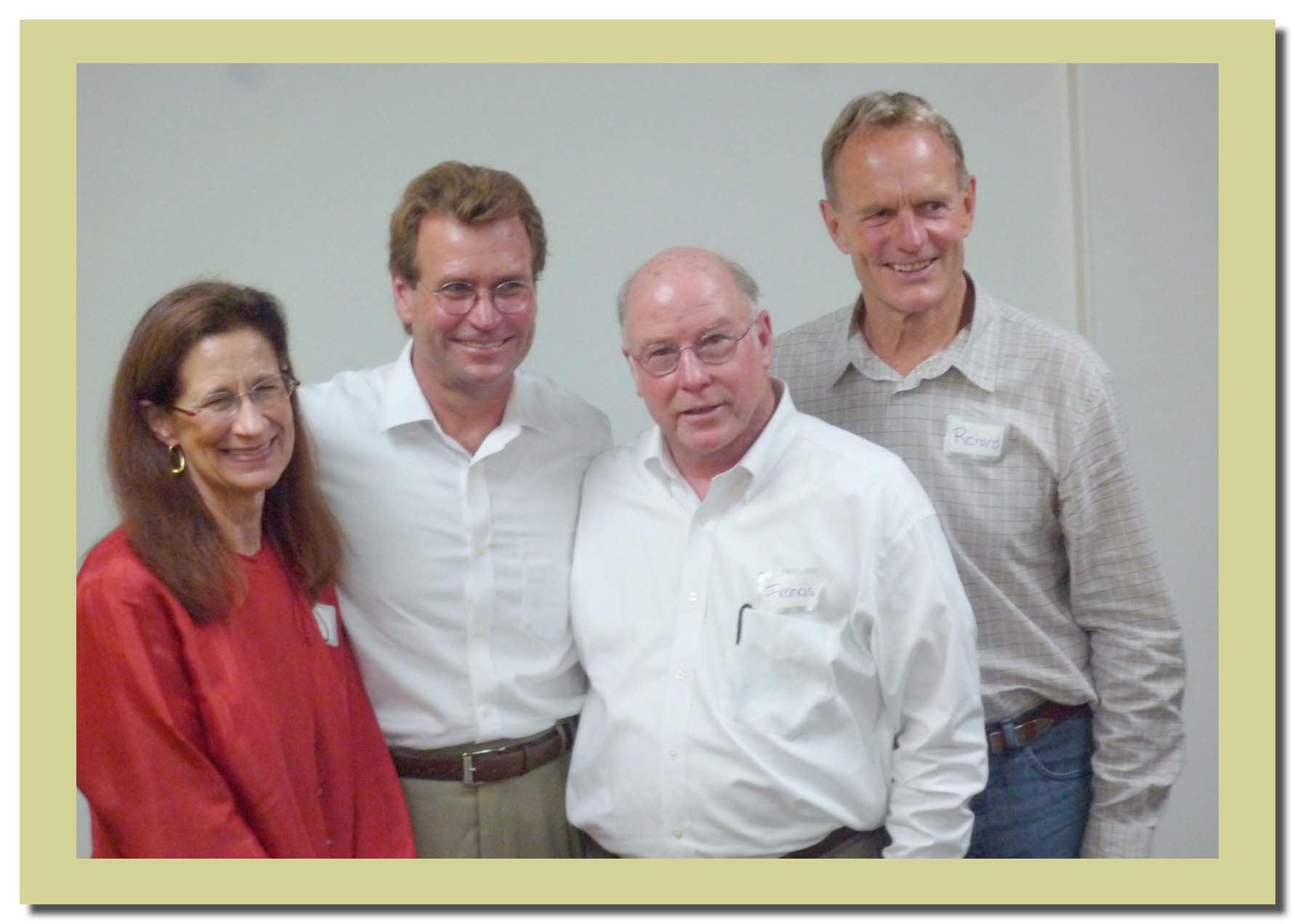
|
